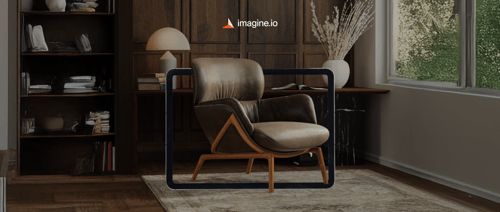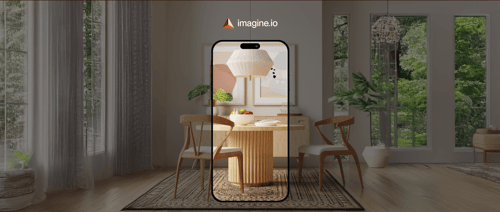Avoid common eCommerce lifestyle photography pitfalls that reduce conversions. Poor lighting, inconsistent branding, and unrealistic staging can damage sales and brand trust.
Quick Listen:
The essence of lifestyle photography lies in its ability to tell a story. A common misstep is presenting products in uninspired or generic settings that fail to connect with customers. A watch photographed against a plain backdrop might display its features, but it lacks the emotional pull of a shot capturing it on a wrist during a morning jog. Shoppers crave visuals that help them envision products in their own lives whether it's a dining table set for a family gathering or a laptop in a bustling café. Skimping on context by opting for sterile studio shots often stems from budget constraints, but the cost of disengaged customers is far higher.
A leading furniture retailer recently transformed its approach by integrating 360-degree imaging into lifestyle settings, creating interactive visuals that allowed customers to explore products from every angle. The result was a measurable boost in engagement and fewer returns, as shoppers gained a clearer understanding of how items fit into their homes. To avoid this pitfall, brands should prioritize authentic, relatable settings. 3D visualization tools can simulate realistic environments cost-effectively, enabling dynamic scenes that evoke emotion without requiring expensive on-location shoots.
Ignoring Cutting-Edge Technology
The photography industry is undergoing a technological revolution, yet some eCommerce brands remain tethered to outdated methods. Innovations like AI-driven image editing, automated lighting, and cloud-based workflows are reshaping the landscape, with the global photography market expected to reach $44.07 billion by 2025, according to industry insights. Failing to embrace these advancements puts brands at a competitive disadvantage.
Take 360-degree photography, a technique that creates interactive animations, allowing users to rotate products on web pages or apps. This technology, proven to increase sales conversions and reduce returns, is a game-changer for eCommerce. Yet, brands that stick to static images risk appearing dated. By integrating 3D visualization software, companies can produce high-quality, interactive visuals efficiently, streamlining workflows and ensuring consistency across platforms. The key is to stay ahead of the curve, adopting tools that enhance both creativity and efficiency.
Compromising on Image Quality
Nothing undermines a brand's credibility faster than low-resolution or poorly lit images. In an era where high-quality visuals are a baseline expectation, subpar photos erode trust and deter purchases. A fashion retailer recently overhauled its eCommerce platform with crisp, vibrant lifestyle images, resulting in a significant uptick in conversion rates. As noted in a market analysis, specialized services like lifestyle shoots and 360-degree imaging are driving engagement by delivering immersive, high-fidelity visuals.
To sidestep this mistake, invest in professional lighting, high-resolution cameras, and post-production tools that enhance clarity without over-editing. For brands using 3D rendering, ensure outputs are optimized for web and mobile displays to maintain sharpness across devices. Quality isn't just a luxury it's a necessity for building customer confidence.
Overlooking Mobile Optimization
With mobile commerce dominating the eCommerce landscape, visuals that don't translate to smaller screens are a costly oversight. Images that dazzle on a desktop can appear cluttered or lose impact on a smartphone if not designed with mobile-first principles. The rise of omnichannel retail, as highlighted in the same market analysis, demands visuals that perform seamlessly across platforms. A beauty brand recently faced declining click-through rates after deploying lifestyle images that were too intricate for mobile displays, underscoring the need for simplicity and clarity.
The fix is straightforward: prioritize clean compositions, bold contrasts, and minimal text overlays. 3D configuration tools can simulate how images render on various devices, allowing brands to fine-tune visuals for maximum impact. By designing for mobile first, companies ensure their photography resonates with the majority of today's shoppers.
Misaligning with Cultural Expectations
Lifestyle photography must reflect the values and preferences of its audience, yet many brands fail to account for cultural nuances. A global electronics company recently misfired with a campaign that leaned on outdated cultural stereotypes, alienating a key market segment. In a diverse, interconnected world, such oversights can damage brand reputation and sales. The rapid growth of eCommerce in Asia-Pacific, driven by localized visual content, as noted in the market report, underscores the importance of cultural relevance.
Brands should conduct thorough audience research, incorporating diverse models, settings, and cultural cues. 3D visualization software can tailor visuals for different regions, ensuring authenticity without requiring multiple physical shoots. This approach not only broadens appeal but also builds trust with global customers.
Neglecting Visual Consistency
Inconsistent visuals mismatched lighting, varied color palettes, or disparate styles can fracture a brand's identity and confuse customers. A cohesive visual story is critical for building recognition and trust. A home décor brand recently unified its photography using 3D rendering tools, creating a consistent aesthetic across its website and social channels. The result was stronger brand recall and higher customer loyalty. Industry advancements like automated lighting solutions, as mentioned in the market analysis, ensure uniformity across large product catalogs, a key differentiator in competitive markets.
To maintain consistency, establish clear photography guidelines and leverage 3D configuration software to standardize outputs. This is especially vital for brands managing extensive inventories, where even minor discrepancies can undermine professionalism.
A Memorable Shaping the Future of eCommerce Visuals
As eCommerce continues its global ascent, lifestyle photography remains a linchpin for success, with the market poised to double by 2033. Avoiding these common mistakes ignoring context, lagging on technology, compromising quality, neglecting mobile optimization, misjudging cultural nuances, and lacking consistency can set brands apart in a crowded digital landscape. By embracing storytelling, cutting-edge tools like 360-degree imaging, and culturally attuned visuals, companies can drive conversions, reduce returns, and build lasting customer connections. The integration of 3D visualization and configuration software offers unparalleled efficiency and creativity, empowering brands to craft compelling visuals that resonate across platforms. For eCommerce leaders, the path forward is clear: prioritize quality, adapt to change, and let your images tell a story that captivates and converts. The future of eCommerce photography is vibrant ensure your visuals shine just as brightly.
Frequently Asked Questions
What are the most common mistakes in eCommerce lifestyle photography?
The most common mistakes include failing to capture the right context by using generic settings, ignoring cutting-edge technology like 360-degree photography, and compromising on image quality with low-resolution photos. Other critical errors involve overlooking mobile optimization, misaligning with cultural expectations, and neglecting visual consistency across platforms. These mistakes can significantly impact conversion rates and customer trust in your eCommerce business.
How does 360-degree photography improve eCommerce sales conversions?
360-degree photography creates interactive visuals that allow customers to explore products from every angle, leading to measurable boosts in engagement and fewer returns. This cutting-edge technology helps shoppers gain a clearer understanding of how products fit into their lives, reducing uncertainty and increasing purchase confidence. Studies show that interactive product visuals significantly increase sales conversions compared to traditional static images.
Why is mobile optimization crucial for eCommerce lifestyle photography?
With mobile commerce dominating the eCommerce landscape, lifestyle photos that don't translate well to smaller screens result in lost sales and declining click-through rates. Images that look great on desktop can appear cluttered or lose impact on smartphones if not designed with mobile-first principles. To optimize for mobile, prioritize clean compositions, bold contrasts, and minimal text overlays to ensure maximum visual impact across all devices.
Disclaimer: The above helpful resources content contains personal opinions and experiences. The information provided is for general knowledge and does not constitute professional advice.
You may also be interested in: Imagine.io | Award Winning 3D + AI Product Visualization
Struggling with expensive, outdated product visuals that slow down your creative process and stunt eCommerce growth? imagine.io's AI-powered platform empowers furniture, home décor, and textile brands to effortlessly produce striking 3D images, immersive videos, AR experiences, and interactive configurators. Cut production costs up to 70%, boost conversions 5X, speed up prototyping, and supercharge your online sales. Ready to elevate your product visuals and captivate customers? Book a demo with imagine.io today!
Powered by flareAI.co




.png?width=500&name=How%20to%20Add%20a%203D%20Product%20Configurator%20to%20Your%20WordPress%20Website%20(Complete%20B2B%20Guide).png)
















%20(1).png?width=500&name=Why%20Exploded%20Mattress%20Views%20Matter%20(And%20How%20to%20Generate%20Them)%20(1).png)
.png?width=500&name=Best%20Shopify%20Product%20Configurator_%20How%20to%20Choose%20the%20Right%20One%20(2).png)
.png?width=500&name=Why%20Exploded%20Mattress%20Views%20Matter%20(And%20How%20to%20Generate%20Them).png)



.png?width=500&name=Best%20Shopify%20Product%20Configurator_%20How%20to%20Choose%20the%20Right%20One%20(1).png)







.png?width=500&name=How%203D%20Rendering%20Can%20Make%20or%20Break%20Your%20Industrial%20Design%20Pitch%20(1).png)








%20with%20Digital%20Twins%20and%203D%20Visualization.png?width=500&name=Optimizing%20Your%20Digital%20Asset%20Management%20(DAM)%20with%20Digital%20Twins%20and%203D%20Visualization.png)




.png?width=500&name=Styling%20Home%20Decor%20for%202025_%20From%20Global%20Influences%20to%20Playful%20Personalization%20(1).png)
